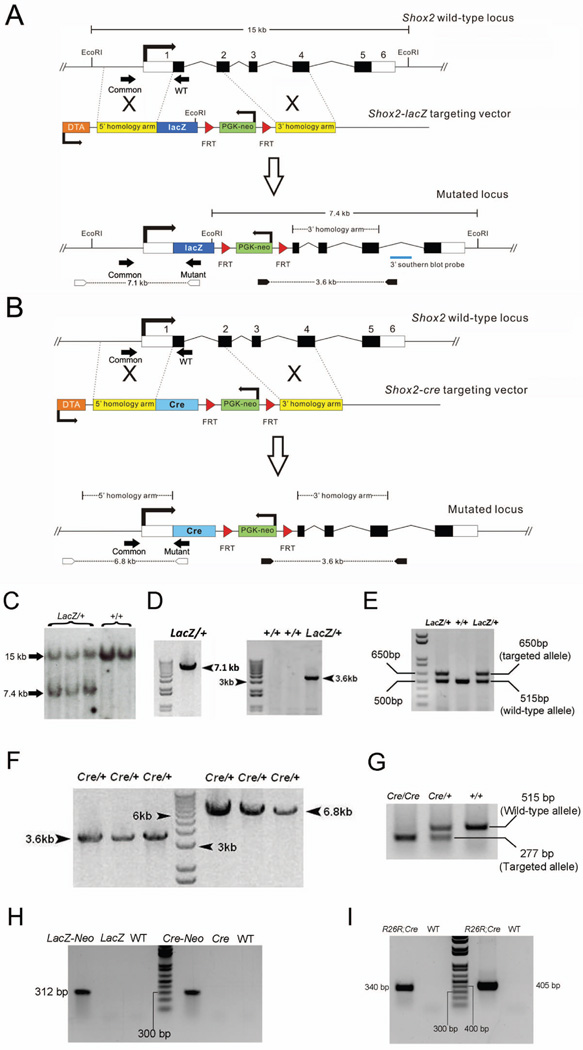Figure 1.
Targeting strategy of generating Shox2-LacZ and Shox2-Cre mice. (A and B) Targeted Cre or LacZ replacement of the Shox2 gene in mice. The mouse Shox2 genomic structure comprises an 8.3 kb region, and contains 6 exons, as indicated by numbered blocks. Black blocks indicate coding regions. The targeting vector contains genomic fragments flanking the lacZ/Cre-FRT-neo-PGK-FRT cassette which replaces exon 1 and part of exon 2 of Shox2 when correct homologous recombination occurs in ES cells. (C) Southern blot analysis for Shox2-LacZ targeted allele (digested with EcoRI and probed with 3’southern blot probe). (D) PCR product for Shox2-LacZ knock-in allele in ES cells. 7.1 kb and 3.6 kb PCR products indicate the correct homologous recombination.at 5' and 3' of the Shox2 locus respectively. Primer sets are labeled by arrow heads in A. (E) PCR analysis of DNA extracted from yolk sac of E10.5 embryos reveals the wild-type and LacZ targeted alleles. Primer sets are labeled by arrow heads in B. (F) PCR screen showing correct homologous recombination of Shox2-Cre targeted vector in ES cells. A set of common, WT and Mutant primers are used and labeled by black arrows in A. (G) PCR analysis of DNA extracted from yolk sac of E10.5 embryos reveals the Shox2-Cre alleles. The primer sets are shown by black arrowheads in B. (H) Verification of neo-PGK deletion by PCR analysis. The neo-PGK cassette is detected in F1 mice (LacZ-Neo and Cre-Neo) and undetectable in WT mice and offspring from F1 mice and FLP deleter mice (LacZ and Cre). (I) Identification of R26R;Shox2Cre/+ double heterozygous mice by PCR assay. A 340 bp PCR product indicates the R26R allele in double heterozygote. The 405 bp product indicates Cre allele.

